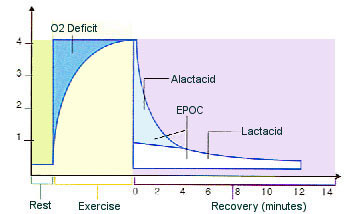HIIT CARDIO: DO HIIT WORKOUTS BURN MORE FAT?

HIIT cardio has been all the rage over the past few years.
Short for “high intensity interval training”, HIIT workouts are a style of cardio where the trainee alternates between periods of high and low intensity throughout the duration of the session.
For example, “60 seconds on” followed by “60 seconds off”… or “15 seconds on” followed by “30 seconds off”.
Unlike traditional long duration/slow-paced cardio, HIIT workouts are short and intense, lasting as few as 10 minutes up to a maximum of about 20.
But which form of cardio is superior for overall fat loss? Low intensity sessions in the range of 45-60 minutes, or high intensity interval sessions in the 10-20 minute range?
High Intensity Vs. Low Intensity Cardio
For years we’ve been told that we should be performing our cardio in a “steady state” where oxygen supply meets oxygen demand. It’s often said that one should be able to comfortably hold a conversation as they perform their cardio.
The reason for this recommendation is because of the way the body’s energy systems work…
When exercising at a steady, low intensity pace, fat becomes the body’s preferred source of energy.
In comparison, high intensity bouts of training performed intermittently will mainly use carbohydrates for fuel.
Given this information, it would seem logical that the traditional 45-60 minute walks on the treadmill are the best way to maximize overall fat loss.
If you take a look at the bigger picture however, you’ll actually find that this is not the case…
How can that be?
Simple: although long duration/slow paced cardio burns a greater percentage of body fat during the actual session, HIIT cardio burns a greater amount of total body fat lasting well beyond the initial bout of exercise.
When you train at a high level of intensity, you create an oxygen deficit within your body. The body is then forced to burn additional calories for several hours afterwards in order to correct the deficit.
This is known as “excess post-exercise oxygen consumption”, or EPOC for short.

Great, but does this actually translate to a significant amount of additional fat loss in comparison to slow paced cardio?
Over short periods of time, the difference is negligible. However, fat loss is a gradual process to begin with, so this doesn’t come as any surprise.
When taking a look at the long term effects of HIIT cardio versus slow paced cardio, the differences are definitely noteworthy.
One study found that over a period of 20 weeks, trainees performing HIIT cardio burned up to 9 times more fat than the group doing the regular low intensity variation.
Not only that, but the group performing HIIT cardio also retained a greater percentage of their lean body mass as well.
http://www.colorado.edu/intphys/Class/IPHY3700_Greene/TIPS/exIntesity/Tremblay.pdf
To put it simply: HIIT workouts burn more total body fat while simultaneously sparing more lean muscle.
If your goal is to strip off body fat while maintaining your hard-earned muscle mass, this is the exact effect you want to strive for.
Does this mean that HIIT cardio should be used as a complete replacement for long duration/slow paced cardio?
No, that’s not necessarily what I’m saying.
What I’m pointing out here is that in a direct head to head comparison, HIIT workouts burn more fat and spare more muscle than low intensity cardio.
However, this comes at a price. HIIT cardio is more effective, but it’s also more taxing on the body as a whole.
Depending on your individual recovery ability, executing a full weight training plan alongside several HIIT workouts per week may simply be too much.
This is where low intensity cardio can be used to help you strike a good overall balance.
It may not be as potent a fat burner as HIIT cardio, but it’s certainly still effective and can help you burn through a few extra calories without overtraining yourself.
For most people following a fat loss program, a mix of high and low intensity cardio will probably be ideal. For example, 1-2 HIIT workouts and 1-2 low intensity sessions in combination with your weight training plan.
Play around with it and see what works best for you.
If you found this article helpful, make sure to sign up for your FREE custom fitness plan below...




